
What material(s) do you use in your sculptures?
“I’m working a lot with different combinations of materials right now – mostly metals – but I love mixing metals with stones, wood, and special found pieces vaguely following a sort of Wabi-Sabi (“beautiful as found”) tradition. But I reserve the right to rework surfaces and use power tools to shape things for a better fit.“
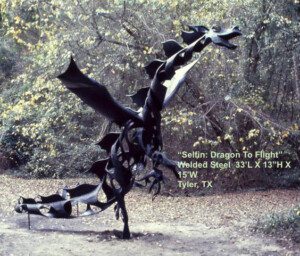
Selfin: Dragon to Flight
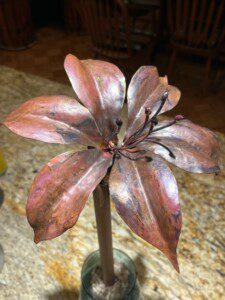
Mother’s Day Miracle
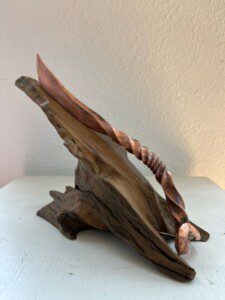
Copper Letter opener on driftwood cedar
What is your primary forming method?
” Metals offer so many options, both additive and subtractive. More often than not the “subtractive” parts means that you can cut something off or reshape things that don’t look right at deeper inspection or from another viewing angle. I’ve been working with steel rod and strap for many years now in a process that has been dubbed “Tack and Bend”, but it may be more appropriately called direct application welded sculpture. Pieces are bent either with heat or bent cold, tack welded in place and welded completely when the contour is right. Copper and silicon bronze can be used in combination, even with steel, or alone. Sheets can be easily hammered for shaping. I recently completed my first totally welded bronze sculpture which had no cast parts using this direct application method.”
What is your favorite surface treatment?
“I really enjoy the natural look of the metal when the piece is simply wire brushed with a grinder for cleaning and sprayed with several coats of satin finish lacquer to avoid rust or patina. Sometimes working with copper or silicon bronze I’ll leave the natural heat (oxidation) colors that are left after welding or brazing.”
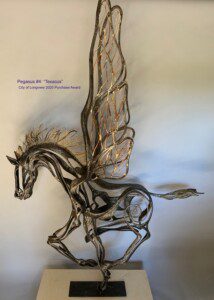
Texacus
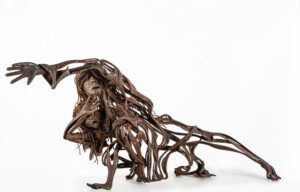
Mohammad’s Madonna
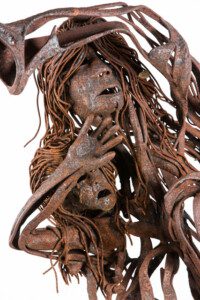
Mohammad’s Madonna Faces
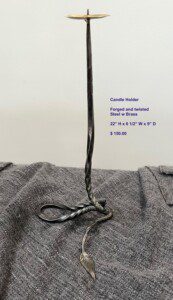
Candle Holder
What are your favorite Tools?
“I’ve used a DHC 2000 welding torch for about 20 years now and find it to be an almost surgically precise welding/brazing instrument, so I’m a sales rep for the system. I also really like pneumatic and electric die grinders, my favorite for about 45 years has been a Makita electric die grinder that turns 25,00 RPM’s. Needless to say it gets the job done – even cleaning up or carving silicon bronze.”
Describe your studio environment.
“My wife and I feel grateful and fortunate enough to have been able to build a dual studio and gallery literally through the garden and next door. I have barn doors and about the equivalent of a long single-car garage with work tables and benches on both sides and a jeweler’s bench at the far end. She has the equivalent of a large kitchen dining area and a beautiful porch for plants and her potter’s wheel. My messy work goes outside, but inside, the work can go on into the night – my time.”
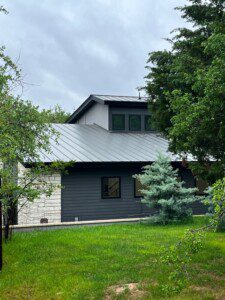
Studio Street View
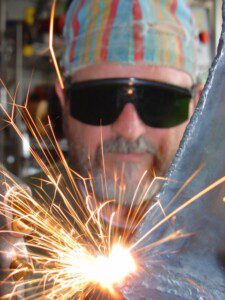
Tom at work on Daybreak Dragon
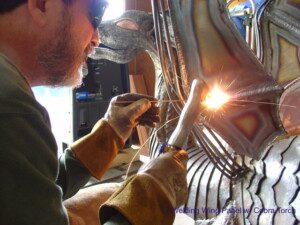
Daybreak Dragon detail welding
How/Where do you market and sell your artwork?
“That is the struggle, I think for every artist. But I believe that connections are the secret in the formula. I was fortunate to be able to do commissioned work and local shows while I was teaching, but the time spent building the studio brought all of that to a halt. Fortunately, I was given a commission just as we were moving in and we have been able to sell through our own open studio dates, a couple of local shows, and continued commission work. I love to teach and that is still in the mix but not all consumptive.”
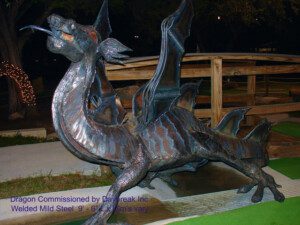
Daybreak Dragon
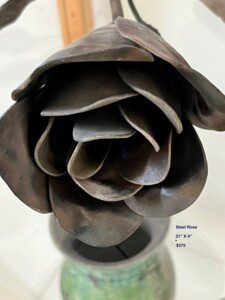
Steel Rose
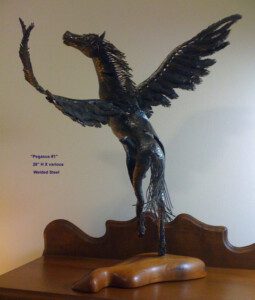
Pegasus #1
What sparks your creativity? What drives you to create?
“Matthew Foxx says that “Work draws forth the divine heart.” So I try to keep the instrument of body/mind clean, something mysterious inspires the mechanism to work and, in the work, problems are confronted and solved. Mind can see and hear. Music people, poets, songsters, and writers hear. Us other guys see stuff that triggers us to find a way to manifest what the vision projects. I like all of this stuff so I try to use one to inspire the others, and keep the wheel rolling.”
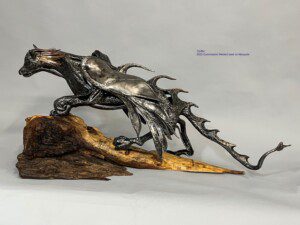
Griffin
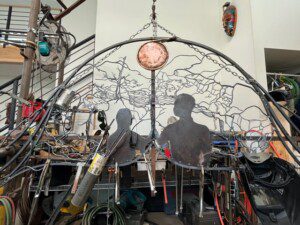
Memorial Gate Lintel (in progress)
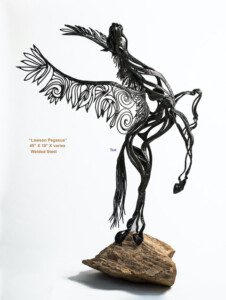
Lawson Pegasus
Did you come to sculpture from a different career? Tell us about your journey to becoming a sculptor.
“I would say more, I came to sculpture because of different careers. I was raised by a professional athlete to be one, but didn’t like competition. I broke my leg playing football and really learned to draw and liked making stuff in the basement workshop and building stuff – tree houses and snow forts. I learned to weld as a desperate art student attempting to keep from flunking out of Normalcy. I was a house painter, a carpenter, a landscape guy, a maintenance man, and an architectural draftsman which served to teach me how to put stuff together. During my last year as a draftsman living in Austin, I had a commission to build a 33’ dragon playscape in Tyler which brought me to a place called The Arts Warehouse in Austin and then, as a young father, I was granted/rescued by a position on the adjunct faculty in the Art Department at ACC. A continuing education class in Art Metals took me to the Welding Department to develop that class into college credit classes and degree plans, while still teaching drawing and art history, and I was ultimately hired as a full-time, full professor of Welding Technology/ Art Metals. Whoa, Baby! I could teach what I love (from that point of view), make money, and still make stuff. What a deal, even as the odd man out.”
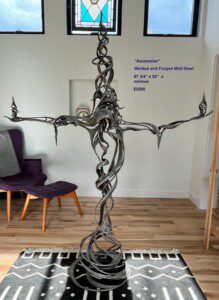
Ascension
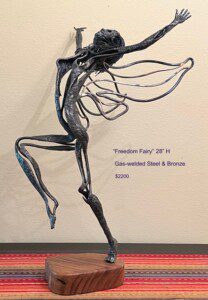
Freedom Fairy
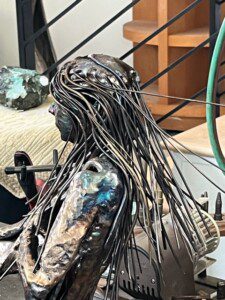
Freedom Fairy Detail
How have you have taken your experience as a well-established maker in the field and passed that knowledge along to other artists?
“I spent 32 years teaching other people how to do what I love to do, and will continue to do so, not because I was or even am, “a well-established maker.” Proof’s in the pudding. I had been desperate and all over the block when I started teaching at ACC, and just wanted to provide for my family. I would say that raw survival instinct led me to the continuing ed office. It is likely that at least a few folks reading this know what I’m talking about. But LIfe can’t happen for you if you just sit on the couch dreaming a smoky dream.”
What’s the best advice you’ve been given by a fellow maker, mentor, or teacher?
“Kudos to Gary Noffke, a graduate of Southern Illinois’ excellent metals program and my first metals teacher said, as a way of keeping me from flunking out of school, “See that welding equipment over there? Why don’t you learn how to use it?”
Justin Kleon: Steal Like An Artist and Show Your Work.
Chase Jarvis: The Creative Instinct
Friend, musician, and mystic Nancy Moore while working on the dragon: “Don’t look for a niche to fit into. Build one.” “
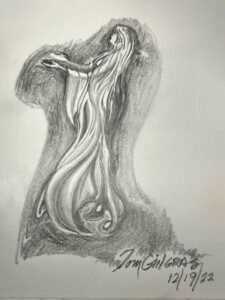
Sketch for Grace
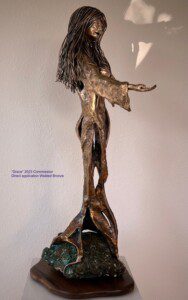
Grace
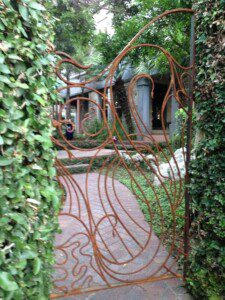
Appelt Gate
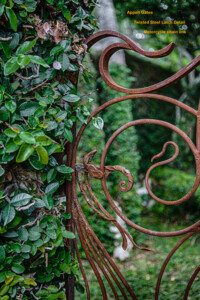
Appelt Gate Latch detail
TSOS Member Profile: Tom Gingras
Bio:
Born: Jan. 7, 1949
Belvidere, Illinois
Home: Bedford, NH/ Sarasota FL
HS Vermont Academy 1967
Bachelor of Arts: Stetson University
Masters of Interdisciplinary Studies (Art, Music, English): U.T. Tyler 1977.
Art Related:
Preparator Tyler Museum of Art 1976-77
Draftsman: Jagger and Associate, Inc 1980-81
Tao-Ono Design Associates 1981-83
Dick Clark and Nick Burkhalter 1983-84
Studio Artist: Arts Warehouse 1985-86
Independent contractor/ sculptor 1987-88
Join faculty Austin Community College 1988- 2021
TJTorchart, LLC. 2021-Present
